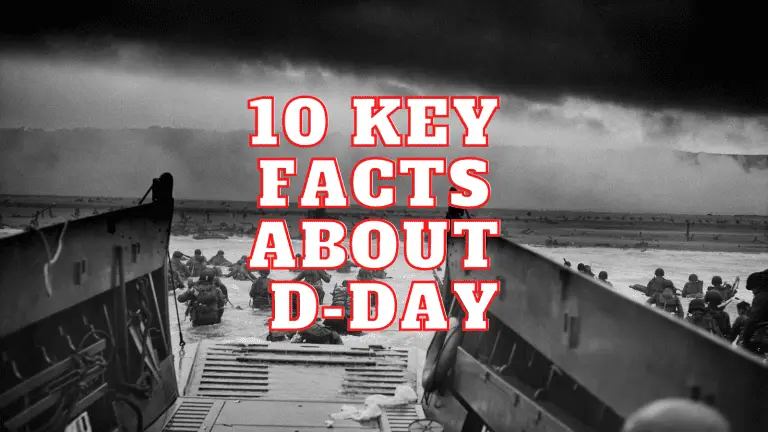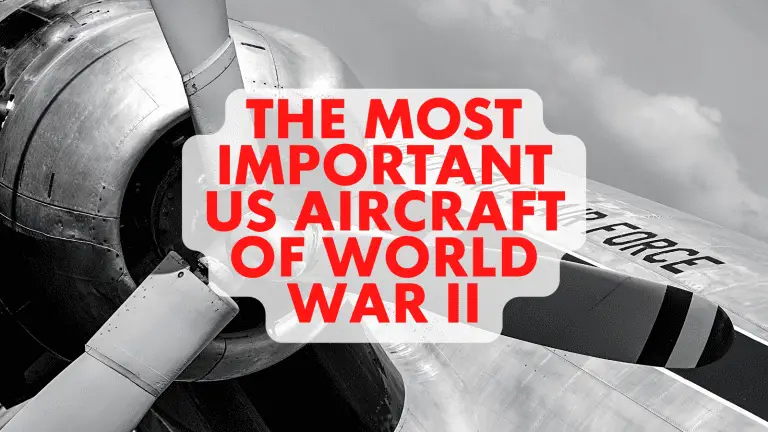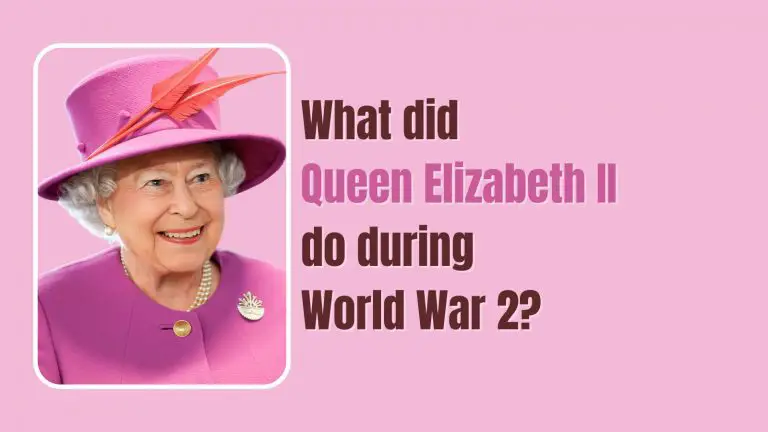The biggest technology advances of World War 2
Necessity is the mother of invention, and World War 2 had the mother of invention on her toes like never before.
The countries involved quickly learned that war wasn’t won by whoever had a bigger army, but rather by whoever had the better weapon. Both the Allies and the Axis powers knew that their troops alone wouldn’t be enough, so they sought out the best scientists and engineers of their time. A race had begun between the cleverest people on earth. Time was a luxury they could not afford, which meant that technology advanced rapidly.
[/et_pb_text][/et_pb_column][/et_pb_row][et_pb_row _builder_version=”4.14.8″ _module_preset=”default” global_colors_info=”{}”][et_pb_column type=”4_4″ _builder_version=”4.14.8″ _module_preset=”default” global_colors_info=”{}”][et_pb_text _builder_version=”4.14.8″ _module_preset=”default” global_colors_info=”{}”]Radar
[/et_pb_text][/et_pb_column][/et_pb_row][et_pb_row _builder_version=”4.14.8″ _module_preset=”default” column_structure=”1_5,3_5,1_5″][et_pb_column _builder_version=”4.14.8″ _module_preset=”default” type=”1_5″][/et_pb_column][et_pb_column _builder_version=”4.14.8″ _module_preset=”default” type=”3_5″][et_pb_image src=”http://historywithhenry.com/wp-content/uploads/2022/02/1-7.jpg” _builder_version=”4.14.8″ _module_preset=”default” alt=”biggest technology advances of World War 2″ title_text=”1″ hover_enabled=”0″ sticky_enabled=”0″][/et_pb_image][/et_pb_column][et_pb_column _builder_version=”4.14.8″ _module_preset=”default” type=”1_5″][/et_pb_column][/et_pb_row][et_pb_row _builder_version=”4.14.8″ _module_preset=”default” global_colors_info=”{}”][et_pb_column type=”4_4″ _builder_version=”4.14.8″ _module_preset=”default” global_colors_info=”{}”][et_pb_text _builder_version=”4.14.8″ _module_preset=”default” global_colors_info=”{}”]Radar is a system that is able to determine the velocity, distance, and angle of objects by making use of radio waves.
In other words, it can tell someone that something is in the sky or the sea when it is many miles away.
The term RADAR was initially an acronym for Radio Detection and Ranging. It was initially made for military purposes, but nowadays, aircraft have radar devices installed to inform them of any other airborne objects that could be in their path, as well as weather conditions.
Although radar would eventually become universal, it was first used by the British. Radar gave British defences the upper hand in the Battle of Britain, the first significant battle fought by only air forces. The Royal Air Force and the Fleet Air Arm defended England from the German air force, Luftwaffe. Since radar can detect aircraft from a distance, the British forces could be forewarned of oncoming threats from their enemies. Even though it could not provide them with an accurate picture of the enemy object, it gave them additional time to prepare for the attack. It is interesting to note that radar was initially German technology. However, the Germans did not expect radar to be used as a defence mechanism and did not know that Britain was using it as such.
If it wasn’t for radar, some historians argue that the British would have lost the Battle of Britain and, ultimately, the war.
[/et_pb_text][/et_pb_column][/et_pb_row][et_pb_row _builder_version=”4.14.8″ _module_preset=”default” global_colors_info=”{}”][et_pb_column type=”4_4″ _builder_version=”4.14.8″ _module_preset=”default” global_colors_info=”{}”][et_pb_text _builder_version=”4.14.8″ _module_preset=”default” global_colors_info=”{}”]The Atom Bomb
[/et_pb_text][/et_pb_column][/et_pb_row][et_pb_row _builder_version=”4.14.8″ _module_preset=”default” column_structure=”1_5,3_5,1_5″][et_pb_column _builder_version=”4.14.8″ _module_preset=”default” type=”1_5″][/et_pb_column][et_pb_column _builder_version=”4.14.8″ _module_preset=”default” type=”3_5″][et_pb_image src=”http://historywithhenry.com/wp-content/uploads/2022/02/Atomic_bombing_of_Japan-scaled.jpg” _builder_version=”4.14.8″ _module_preset=”default” title_text=”Atomic_bombing_of_Japan” hover_enabled=”0″ sticky_enabled=”0″][/et_pb_image][/et_pb_column][et_pb_column _builder_version=”4.14.8″ _module_preset=”default” type=”1_5″][/et_pb_column][/et_pb_row][et_pb_row _builder_version=”4.14.8″ _module_preset=”default” global_colors_info=”{}”][et_pb_column type=”4_4″ _builder_version=”4.14.8″ _module_preset=”default” global_colors_info=”{}”][et_pb_text _builder_version=”4.14.8″ _module_preset=”default” global_colors_info=”{}”]The atomic bomb was no average explosive. The Atomic Bomb was the first nuclear weapon to be used in warfare. An atom is split, which results in the release of thermal energy and radiation that can cover a larger area than regular explosives.
The atomic bomb was the product of the Manhattan Project, an American government research organisation. Albert Einstein, who became an American emigrant, was among those who offered insight into the possibilities of a nuclear bomb. The idea of the weapon was primarily theoretical until J. Robert Oppenheimer joined the project in 1943. Oppenheimer is known to be the “father of the atomic bomb” due to his contributions which led to the bomb being ready for testing. This test was conducted in New Mexico in July of 1945; it was placed on a steel tower and monitored from 9km away. A large flash of light, extreme heat, and a roaring noise could be observed when it was detonated. The explosion caused the steel tower to vaporise completely.
After the Allies had defeated Germany, Japan maintained its resolve to fight. In the months leading up to the end of the war, it increased its war efforts, resulting in many deaths of Allied forces. The Allies demanded their surrender, which they ignored. Therefore, on August 6, 1945, the first atomic bomb (known as ‘Little Boy’) was dropped on Hiroshima. Despite the devastating death toll, Japan still refused to surrender. It was only after the second atomic bomb (named ‘Fat Man’) was used on Nagasaki that Japan announced its surrender, causing WW2 to come to an end.
[/et_pb_text][/et_pb_column][/et_pb_row][et_pb_row _builder_version=”4.14.8″ _module_preset=”default” global_colors_info=”{}”][et_pb_column type=”4_4″ _builder_version=”4.14.8″ _module_preset=”default” global_colors_info=”{}”][et_pb_text _builder_version=”4.14.8″ _module_preset=”default” global_colors_info=”{}”]The Jet Engine
[/et_pb_text][/et_pb_column][/et_pb_row][et_pb_row _builder_version=”4.14.8″ _module_preset=”default” global_colors_info=”{}”][et_pb_column type=”4_4″ _builder_version=”4.14.8″ _module_preset=”default” global_colors_info=”{}”][et_pb_text _builder_version=”4.14.8″ _module_preset=”default” global_colors_info=”{}”]The jet engine is an internal combustion engine that generates thrust by means of ejecting air to move in the opposite direction of the ejection. The jet engine allowed aircraft to fly at higher altitudes and reach far greater speeds.
British cadet, Frank Whittle, started working on the jet engine in 1928, and German engineer Hans von Ohain also began his work on it. Both were unaware that the other was trying to accomplish the same thing. After some perseverance, in 1944, Germany was able to mass-produce the first jet-fighter aircraft known as the Messerschmitt Me 262. A few months later, the Gloster Meteor developed by Whittle was used in the Royal Air Force.
[/et_pb_text][/et_pb_column][/et_pb_row][et_pb_row _builder_version=”4.14.8″ _module_preset=”default” global_colors_info=”{}”][et_pb_column type=”4_4″ _builder_version=”4.14.8″ _module_preset=”default” global_colors_info=”{}”][et_pb_text _builder_version=”4.14.8″ _module_preset=”default” global_colors_info=”{}”]Rockets
[/et_pb_text][/et_pb_column][/et_pb_row][et_pb_row _builder_version=”4.14.8″ _module_preset=”default” column_structure=”1_5,3_5,1_5″][et_pb_column _builder_version=”4.14.8″ _module_preset=”default” type=”1_5″][/et_pb_column][et_pb_column _builder_version=”4.14.8″ _module_preset=”default” type=”3_5″][et_pb_image src=”http://historywithhenry.com/wp-content/uploads/2022/02/2-7.jpg” _builder_version=”4.14.8″ _module_preset=”default” alt=”biggest technology advances of World War 2″ title_text=”2″ hover_enabled=”0″ sticky_enabled=”0″][/et_pb_image][/et_pb_column][et_pb_column _builder_version=”4.14.8″ _module_preset=”default” type=”1_5″][/et_pb_column][/et_pb_row][et_pb_row _builder_version=”4.14.8″ _module_preset=”default” global_colors_info=”{}”][et_pb_column type=”4_4″ _builder_version=”4.14.8″ _module_preset=”default” global_colors_info=”{}”][et_pb_text _builder_version=”4.14.8″ _module_preset=”default” global_colors_info=”{}”]“It’s not rocket science” is a phrase that is often used to suggest that a task is simple. In other words, “rocket science” is complicated.
We consider rockets as vehicles that might take us to the moon. But rocket technology is used in weapons.
It was first used in World War 2.
The V-1 was a cruise missile with a distinctive ‘buzzing’ noise. Thousands were launched at Britain in 1944. It was known in England as the buzz bomb or the doodlebug. Almost 10,000 were launched towards the southeast of England.
Then came the V-2 rocket, the world’s first guided ballistic missile. More than 3000 V-2s were launched at Allied forces, who had no defence against them due to their high speed and lack of audible warning. They created a huge amount of fear, particularly in London, and if they had been available just a few months earlier would probably have changed the course of the war.
After Allied forces defeated Germany, numerous V-2 developers surrendered to America. Many ultimately ended up working for NASA.
[/et_pb_text][/et_pb_column][/et_pb_row][et_pb_row _builder_version=”4.14.8″ _module_preset=”default” global_colors_info=”{}”][et_pb_column type=”4_4″ _builder_version=”4.14.8″ _module_preset=”default” global_colors_info=”{}”][et_pb_text _builder_version=”4.14.8″ _module_preset=”default” global_colors_info=”{}”]Penicillin
[/et_pb_text][/et_pb_column][/et_pb_row][et_pb_row _builder_version=”4.14.8″ _module_preset=”default” column_structure=”1_5,3_5,1_5″][et_pb_column _builder_version=”4.14.8″ _module_preset=”default” type=”1_5″][/et_pb_column][et_pb_column _builder_version=”4.14.8″ _module_preset=”default” type=”3_5″][/et_pb_column][et_pb_column _builder_version=”4.14.8″ _module_preset=”default” type=”1_5″][/et_pb_column][/et_pb_row][et_pb_row _builder_version=”4.14.8″ _module_preset=”default” global_colors_info=”{}”][et_pb_column type=”4_4″ _builder_version=”4.14.8″ _module_preset=”default” global_colors_info=”{}”][et_pb_text _builder_version=”4.14.8″ _module_preset=”default” global_colors_info=”{}”]It’s not every day you can say that you accidentally discovered a way to kill bacteria, but for Dr. Alexander Fleming, this was the case.
In 1928, Fleming noticed that mould growing on a petri dish had killed the bacteria. However, he was unable to purify the penicillin from the mould.
Eventually, in 1940, scientists found a way to produce penicillin for medical uses, but the production method was slow, and they were quickly depleting their stock. In 1943, a scientist from the Pfizer company suggested the use of deep-tank fermentation, which could produce larger quantities at a higher dose.
This made it possible for Allied troops with infections to be treated and saved.
[/et_pb_text][/et_pb_column][/et_pb_row][et_pb_row _builder_version=”4.14.8″ _module_preset=”default” global_colors_info=”{}”][et_pb_column type=”4_4″ _builder_version=”4.14.8″ _module_preset=”default” global_colors_info=”{}”][et_pb_text _builder_version=”4.14.8″ _module_preset=”default” global_colors_info=”{}”]Computers
[/et_pb_text][/et_pb_column][/et_pb_row][et_pb_row _builder_version=”4.14.8″ _module_preset=”default” global_colors_info=”{}”][et_pb_column type=”4_4″ _builder_version=”4.14.8″ _module_preset=”default” global_colors_info=”{}”][et_pb_text _builder_version=”4.14.8″ _module_preset=”default” global_colors_info=”{}”]Computers have been in use since the 19th Century (Yes, you might not recognise them as such, but computers in a fundamental form have been around since then.)
In 1938, the United States Navy developed a small computer to fit on a submarine. This was known as the Torpedo Data Computer, which was used to fire a torpedo at an object in motion.
Alan Turing is known to be the father of theoretical computers and artificial intelligence. He earned this reputation for his genius contribution to the successful functioning of the bombe, a device used to decipher encrypted messages from another device used by Germany’s Military Command during the war, known as Enigma. The original design was made by Turing in 1939, with the help of Gordon Welchman at Bletchley Park, Britain.
[/et_pb_text][/et_pb_column][/et_pb_row][et_pb_row _builder_version=”4.14.8″ _module_preset=”default” global_colors_info=”{}”][et_pb_column type=”4_4″ _builder_version=”4.14.8″ _module_preset=”default” global_colors_info=”{}”][et_pb_text _builder_version=”4.14.8″ _module_preset=”default” global_colors_info=”{}”]The Jerrycan
[/et_pb_text][/et_pb_column][/et_pb_row][et_pb_row _builder_version=”4.14.8″ _module_preset=”default” global_colors_info=”{}”][et_pb_column type=”4_4″ _builder_version=”4.14.8″ _module_preset=”default” global_colors_info=”{}”][et_pb_text _builder_version=”4.14.8″ _module_preset=”default” global_colors_info=”{}”]In this article, we have discussed some substantial technological advancements that took place during World War 2. It would be unfair to leave out some of the smaller innovations, such as the Jerrycan.
The Jerrycan is a steel container with a 20-litre capacity that was used to carry fuel by hand; it was developed by Germany in 1939 in preparation for war. Adolf Hitler himself made it a priority at the time to carry and transport fuel easily in a robust container. The design was later copied by the Allied forces.
[/et_pb_text][/et_pb_column][/et_pb_row][et_pb_row _builder_version=”4.14.8″ _module_preset=”default” global_colors_info=”{}”][et_pb_column type=”4_4″ _builder_version=”4.14.8″ _module_preset=”default” global_colors_info=”{}”][et_pb_text _builder_version=”4.14.8″ _module_preset=”default” global_colors_info=”{}”]In conclusion…
[/et_pb_text][/et_pb_column][/et_pb_row][et_pb_row _builder_version=”4.14.8″ _module_preset=”default” global_colors_info=”{}”][et_pb_column type=”4_4″ _builder_version=”4.14.8″ _module_preset=”default” global_colors_info=”{}”][et_pb_text _builder_version=”4.14.8″ _module_preset=”default” global_colors_info=”{}”]The second World War, although being a dark time, provided the world with many brilliant inventions in a short period.
If it were not for the dire needs that war creates, many of these ingenious designs might have taken decades to grace us with their presence.
[/et_pb_text][/et_pb_column][/et_pb_row][/et_pb_section]





